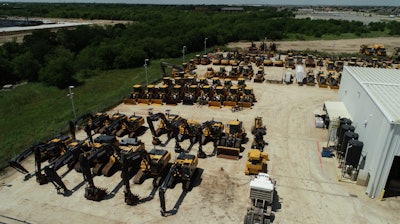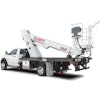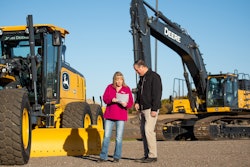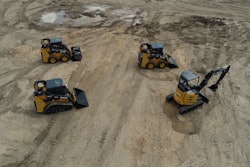
This blog post was adapted from its original version on the RDO website and used by Rental with permission from the company and author.
If there is one thing to be said about 2020, it’s that uncertainty ruled the day in many ways and many aspects of life. The construction industry was no exception, as contractors in all segments juggled the unknowns of an election year, a global pandemic, and everything else 2020 had to offer.
Amid its trials, the year’s uncertainty drove contractors to think differently about the way they operate and get creative to maneuver their businesses and keep working. The equipment rental industry shared the ups and downs of the construction industry, but the rental option proved to be a valuable tactic for contractors reworking strategies on the fly.
No two industry segments fared exactly alike this year, but the spotlight shined on rental equipment in the markets I have surveyed this year revealed some of its biggest benefits—some that may very likely continue to play a vital role in contractors' business plans in 2021 and years to come.
Highs and Lows Around the Industry
A surprising bright spot in the construction industry in 2020 was the housing segment. Though it rode the rollercoaster of highs and lows like others, housing ended the year with significant net gains. The explosion of activity, driven in part by favorable interest rates, made for an upward trend in the latter half of 2020 that seemed poised to continue.
Contractors I talked to in the homebuilding segment report a strong backlog and an encouraging outlook in the late stages of 2020. The big unknown, of course, is if, when, and whether it will slow back down, and that means more builders are taking a conservative approach to managing equipment fleets. Given these market dynamics, rental equipment provides customers the ability to be better positioned for future changes without sacrificing their ability to meet today’s demand.
The infrastructure segment served as a middle ground of sorts, bridging the highs and lows across the industry. Even amid the initial impact of COVID-19 in the spring, jobs already underway were still expected to be completed, and for some contractors, that meant a healthy backlog of work for the foreseeable future.
Infrastructure’s general positivity comes along with a shorter job outlook for contractors, who simply can’t be sure of what work will come next. But in handling that limited foresight, rental, again, proves valuable, allowing customers options to meet the needs of current jobs without gambling on an unknown future.
Ultimately, what 2020 showed was the resiliency of construction contractors, their commitment to both getting jobs done and keeping people employed. It was a reminder that in an environment like this, it’s no longer about having the biggest, shiniest fleet of equipment; it’s about having the right machines for the job at hand and being prepared to adjust for whatever job may come next. Rental’s role in such a plan can be cemented through three of the most significant advantages it offered in 2020.
Rental Advantage #1 – Cash Flow Management
One of rental’s biggest impacts is flexibility in managing cash flow. Payments on a purchased machine must be made whether the machine is being used or not. If available jobs shift and the machine is no longer needed, it can quickly become a troubling liability. When the backlog is uncertain, rental eliminates the capital investment required for a purchase and contractors can return unneeded machines if jobs change.
Rental Advantage #2 – Nimble Equipment Fleet
Speaking of jobs changing, that same flexibility allows for quick restructuring of an equipment fleet. Part of the creative adaptation to uncertainty means contractors may look to take on different types of jobs, ones they may not have historically pursued. Often, this may mean acquiring equipment not typically found in the fleet. By augmenting a fleet with rental machines, equipment can be swapped and added quickly while tying up less cash than in an entirely owned fleet.
Rental Advantage #3 – Renting to Own
Even amid uncertainty, thinking strategically means looking beyond just today. With many rental providers offering rent-to-purchase options, contractors can manage through short-term uncertainty while still adhering to a long-term plan. If the odds are likely that a rented machine will be purchased later, terms and pricing can be built into the rental agreement, allowing customers to invest in the eventual purchase while renting the machine.
While there are many reasons to wave a hearty goodbye to 2020, we did learn a lot about the value of flexibility and adaptability in the construction industry in the last year. And though we don’t know exactly what 2021 has in store for us, we know the place rental has earned in contractors’ business toolkits, whatever the future may bring.




















